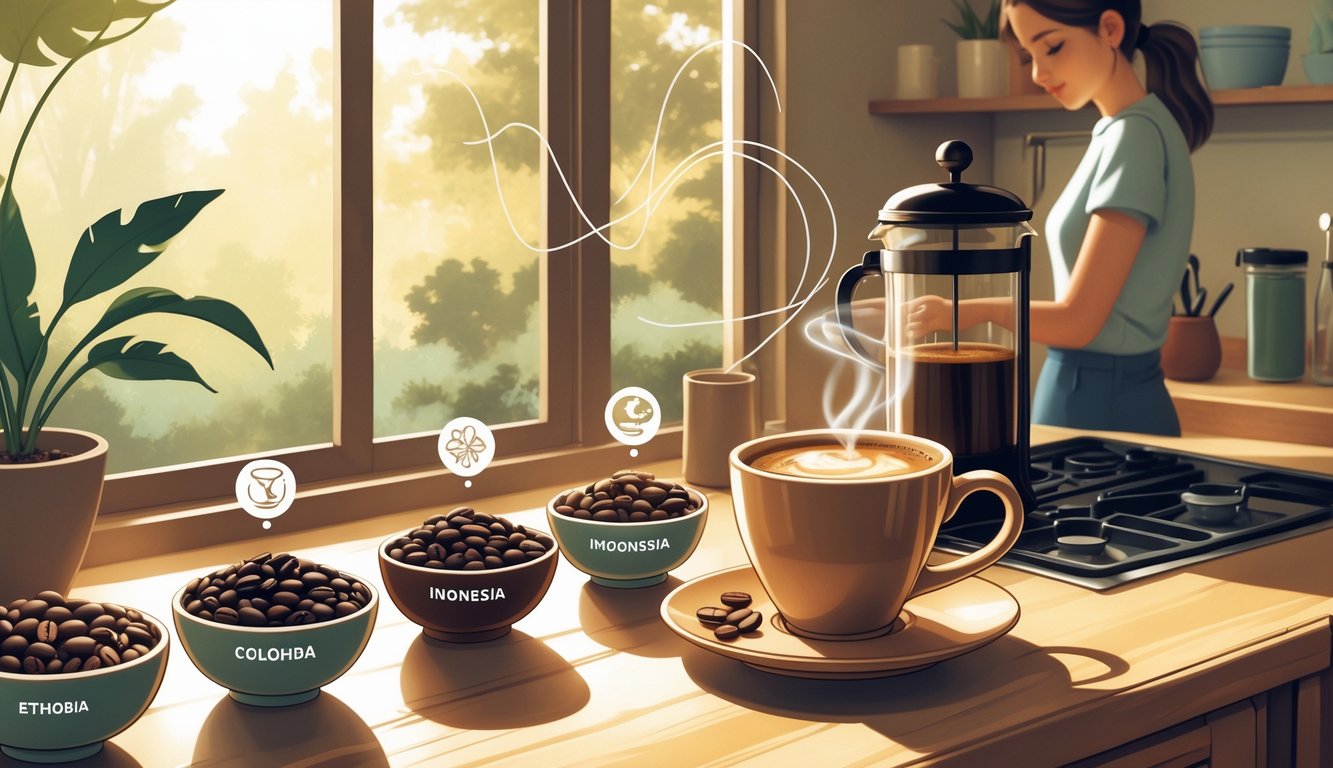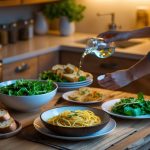
Tips for Brewing the Perfect Cup at Home
Buying fancy beans is pointless if you use tap water that tastes like old pipes. It’s not about having the fanciest gadgets—bean care and water matter way more. I’ve asked every barista I know and they all say the same thing.
Selecting the Right Filtered Water
I used to think water was water, but apparently bad tap water can wreck a good Ethiopian Yirgacheffe, mute a light roast, and make your kitchen smell like pennies. There’s a Specialty Coffee Association chart about water having 70-125 ppm minerals—whatever that means. My $40 filter probably gets close, but nobody I know checks TDS before brewing.
Distilled water? Overkill. Coffee tastes flat, and Bon Appétit even says so. The real trick is not using water that tastes gross—just filter out the chlorine and weird minerals so your Kenyan beans don’t taste like wet cardboard. Some roasters mail out mineral drops and warn against plastic-jug spring water, but honestly, I just use filtered tap and save the drama for my second espresso.
Storage and Freshness of Beans
Let’s just get this out of the way: I still can’t wrap my head around how fast coffee beans go from “freshly roasted in Guatemala” to “smells like a grocery store aisle.” I mean, Adam Overton—yeah, the Blue Bottle guy, not that other Adam—once ranted at me about airtight containers, like, “Don’t even bother brewing at home if you’re just gonna let oxygen ruin everything.” Fine, I went and bought a vacuum-sealed canister, but now I’m always losing the scoop, so what’s the point? Glass jars with tight lids basically work, but don’t even think about the fridge. Coffee beans hate moisture. Also, onions. Learned that the weird way.
Look, if you want to pretend you’re on top of things, scribble the roast date somewhere or just buy those tiny 250g bags. I learned my lesson after leaving a bag of Brazil peaberry next to my spice rack for a month—tasted like a damp basement. Heat, sunlight, open air: that’s the unholy trinity for killing coffee. Seriously, if you’re trying to impress anyone or just want your Monday to suck less, don’t do what I did. If you’re desperate for more detail, Blues Best Life has a whole guide on storage. I half-read it once. It’s there.
Frequently Asked Questions
Didn’t sleep enough, I’m late, and now I’m supposed to pick a coffee bean? Ethiopian beans punch you with berry flavors, Colombian ones are just nutty (in a boring way?), and honestly, I’ll grab anything promising a caffeine kick as long as it doesn’t taste like burnt toast. My French press jams up every third morning. So yeah, nothing reliable.
What are the unique flavor profiles of coffee beans from different regions?
Every time I swap out Peruvian beans for Sumatran, something weird happens on my tongue. This Q Grader—coffee snob, basically—once told me, “Guatemalan beans are all chocolate, Ethiopian Yirgacheffe is citrusy.” Sure, except when I mess up the brew and everything tastes like dishwater. Sometimes I wonder if regional flavor is real or if my tap water is sabotaging me.
Different regions actually do mess with your coffee, supposedly. Washed Latin American beans? Caramel. Kenyan? Tomato-soup-adjacent, especially if my allergies are acting up. But who trusts their taste buds before sunrise? Not me.
How can different coffee beans enhance my morning ritual?
It’s ridiculous—I’m always late, but somehow I still waste time picking beans. Brazil for body, Ethiopian for brightness, or I just mix whatever’s left and call it “experimental.” Last month, my friend dumped coconut milk in my Chemex, and I’m still mad. Baristas keep talking about blending beans to change your mood, which sounds like a stretch, but maybe they’re onto something.
Switching beans does sometimes flip my mood. African roasts wake me up, supermarket stuff just makes me sad. Still, I lose my mug at least twice a week, so who’s really winning?
Are there specific coffee beans that can contribute to weight loss?
Coffee beans for weight loss? Come on. People sell green coffee extract for this, but if you dig into actual research, nothing solid comes out. Harvard’s T.H. Chan School of Public Health basically shrugs—yeah, caffeine speeds up metabolism a little, but so what?
If swapping Sumatran for Colombian made me lose weight, I’d look like an athlete. My attempts just end with heartburn and a snack. Black coffee without a pastry is the closest I’ve ever gotten to “weight loss.”
What’s the difference between beans used for espresso and regular coffee?
Espresso beans aren’t a thing. It’s about roast and grind size. My friend keeps saying darker roasts are for espresso, but honestly? Medium roast, fine grind, enough pressure—you can make a shot from anything labeled “drip” if you try hard enough.
People go on about robusta’s extra caffeine and arabica’s “flavor,” but every café blends whatever’s around. I tried making espresso with French press grind once—total swamp water. Didn’t break my moka pot, though, so that’s something.
Can the region of origin impact the caffeine content in my morning cup?
Okay, so robusta beans (Vietnam, Indonesia, whatever) have way more caffeine. Arabica is what you usually get at fancy shops, and it’s milder. Does region really control caffeine? Not really—variety and processing do most of the work.
I swear my Ethiopian coffee makes me shakier than Guatemalan, but maybe that’s just bad brewing. Even decaf sneaks in up to 15 mg of caffeine, so if you’re actually tracking this stuff, good luck. I never do.
How do I brew the perfect cup of coffee using beans from various regions?
Perfect cup? I mean, come on—does that even exist? Half the time my French press spits out gritty swamp water, and pour-over? Might as well be a lottery ticket. Everyone online’s got an opinion: “Oh, try Ethiopian or Kenyan beans with pour-over, you’ll taste the notes of sunshine and poetry.” Sure. Meanwhile, Sumatran or Brazilian beans just kind of survive whatever chaos I throw at them—usually when I’m half-awake, fumbling that French press like it’s a science experiment I never wanted.
Here’s what I actually do: buy the tiniest bag of beans I can find (because commitment issues), grab whatever French press or pour-over thing isn’t in the dishwasher, and just wing it. Ratios? Who has time. Influencers claim there’s a “correct” method, but, honestly, I’m at like 60% drinkable success and that feels generous. Sometimes my cat launches herself at the counter and the whole kettle goes flying, so—precision? Not in this house.



